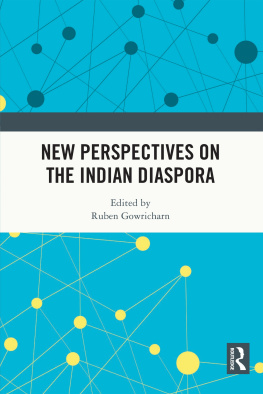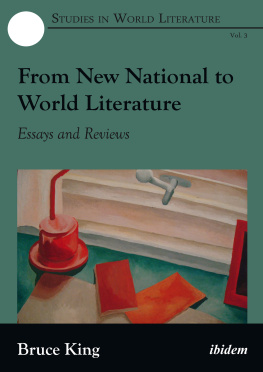LONDON SCHOOL OF ECONOMICS MONOGRAPHS ON SOCIAL ANTHROPOLOGY
Managing Editor:CharlesStafford
The Monographs on Social Anthropology were established in 1940 and aim to publish results of modern anthropological research of primary interest to specialists.
The continuation of the series was made possible by a grant in aid from the Wenner-Gren Foundation for Anthropological Research, and more recently by a further grant from the Governors of the London School of Economics and Political Science. Income from sales is returned to a revolving fund to assist further publications.
The Monographs are under the direction of an Editorial Board associated with the Department of Anthropology of the London School of Economics and Political Science.
First published 1973 by The Athlone Press
Republished 2004 by Berg Publishers
Published 2020 by Routledge
2 Park Square, Milton Park, Abingdon, Oxon OX14 4RN
605 Third Avenue, New York, NY 10017
Routledge is an imprint of the Taylor & Francis Group, an informa business
Copyright Stuart B. Philpott 2004
All rights reserved. No part of this book may be reprinted or reproduced or utilised in any form or by any electronic, mechanical, or other means, now known or hereafter invented, including photocopying and recording, or in any information storage or retrieval system, without permission in writing from the publishers.
Notice:
Product or corporate names may be trademarks or registered trademarks, and are used only for identification and explanation without intent to infringe.
ISBN13: 978-1-8452-0040-4 (hbk)
West Indian migration has attracted considerable attention in recent years. There is a growing body of sociological literature dealing with various aspects of the adjustment of West Indian, as well as other, immigrants in Britain. While such studies vary widely in orientation and empirical content, they tend to focus either on the relations of migrants with the host society in terms of such concepts as assimilation, prejudice and discrimination (e.g. Glass 1960, Patterson 1963) or on the internal structuring of the migrant populations themselves (Banton 1954), or both. The continuing relationships these migrants maintain with the societies they have left, on the other hand, have been largely ignored.
Such academic concerns in British social science parallel the earlier (and continuing) emphasis on the sociology of immigration in the United States, an emphasis which has resulted in an accumulated literature on the subject of staggering proportions. Furthermore this scholarly interest reflects a wider concern of government members, official agencies, and the public at large, over such social problems as overcrowded housing, racial tension, and unemployment which are linked with (particularly by political demagogues) the highly visible influx of coloured immigrants to Britain.
Yet the proportion of such immigrants in the total British population is relatively small, certainly far less than the proportion emigrants comprise relative to the population of most West Indian islands. For such island societies die social implications of migration are possibly more significantif less dramaticthan they are for Britain. This end of the migratory path has been neglected by the social sciences. Sociologists and anthropologists have been asking what happens in British society with the entry of large numbers of West Indians; they have paid little attention to what happens in West Indian society with their exit.
Admittedly a considerable amount of work has been published (cf. Davison 1962, Roberts and Mills 1958, Peach 1968) as to the causes of the migration in terms of population increase and density, British labour shortage, etc., as well as some statistical documentation of the gross economic and demographic implications of the migration. But the social implications are often ignored or dismissed as obvious. Davison, an economist, for example, simply states: The migration is draining the islands of the younger people, leaving the older folk and the children behind. The economic and social implications of such a lop sided arrangement need no elaboration (196a: 16).
On the contrary I believe that the implications of this and other aspects of migration need a great deal of elaboration. A detailed analysis of the adaptation of a Caribbean society in the face of continuing out-migration is relevant to the understanding of that particular area as well as small-scale societies undergoing similar processes elsewhere.
Furthermore the only substantial body of research on the sociology of out-migration has been done primarily by British anthropologists on labour migration in Africa. Such studies focus largely on lineage-based tribal societies. This study, hopefully, will partially offset too great an emphasis on an African model and allow some more general conclusions to be drawn.
Montserrat, the island chosen for the research, has long been heavily affected by out-migration. Fieldwork was conducted in the island from August of 1964 to September 1965, and intermittently from that time to June 1966 with Montserratian migrants in London. Since that time Frucht (1966, 1968) has dealt briefly with the effect of remittances and migration on social stratification and economy in Nevis. Also Crane (1966) has analysed some implications of selective migration from the Dutch Caribbean island of Saba. Despite these works I believe this is the first study in the Caribbean which attempts to systematically examine the implications of migration for the major institutional complexes of the society.
The study of the implications of mass emigration for the sending society presents a number of methodological problems. To some extent, in speaking of the implications of migration, one is speaking of the social change connected with such migration and the approach to its study should be that applied to the study of social change.
Most anthropological studies of social change are of the before and after variety. Such studies are rarely truly diachronic wherein the investigator spends a very long time in the field recording and analysing the ongoing processes of social change. Instead most such studies are based on the comparison of a social structure abstracted earlier by the same or a different investigator. Other methods have included the construction of a zero point or base line of culture as the datum against which to compare change.








